Discover financial empowerment resources
Discover financial empowerment resources
The Community Volunteer Income Tax Program (CVITP) is a partnership between the Canada Revenue Agency (CRA) and local community organizations. The program is intended to ensure that all taxpayers have equal access to the tax system. In Grey and Bruce Counties, 14 community organizations provide...
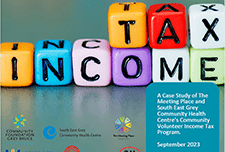
This report delves into one of the community investment trends that emerged during the pandemic: innovative partnerships. This research follows the Wake Up Call study, released in the Fall of 2020, and continues to answer the question of: how can corporate philanthropy do better, and do...
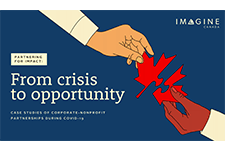
Program strategies grounded in an understanding of your community can increase the likelihood of engagement and follow-through. The following resources are intended to support VITA programs with implementation strategies at key program stages, like outreach and intake, and offer examples of how...

The Toronto Central Local Health Integration Network (Toronto Central LHIN) provided financial support to establish the Measuring Health Equity Project and has called for recommendations on health equity data use and a sustainability approach for future data collection. This report describes the...
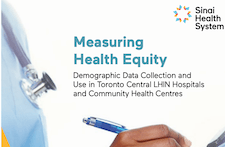
Statistics Canada presents a learning catalogue to share knowledge on data literacy. Data literacy is the ability to derive meaningful information from data. It focuses on the competencies involved in working with data including the knowledge and skills to read, analyze, interpret, visualize and...
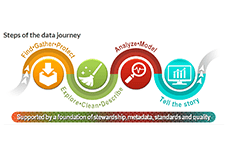
Benefits and credits provide income and financial support for many individuals. This toolkit contains information on common tax credits and benefits, benefits for specific populations, and practitioner resources including case studies and information on identification documentation for accessing...
The Investor Protection Clinic, the first clinic of its kind in Canada, provides free legal advice to people who believe their investments were mishandled and who cannot afford a lawyer. The Clinic was founded together with the Canadian Foundation for Advancement of Investor Rights (FAIR Canada),...

More than half of all employees in the United States report that they are financially stressed, and nearly one in three employees reports being distracted by personal financial issues while at work. This financial stress impacts individuals’ health, relationships, productivity, and time away...
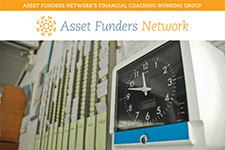
This discussion paper responds to a request from ESDC to develop options for reforms to the Canada Education Savings Program and, more specifically to improve access to the Canada Learning Bond. It reviews individual and institutional challenges to participation in the current system and consider...
This brief will provide a variety of insights and recommendations for creating more equitable opportunities and inclusive programs based on the first-hand experiences of organizations across the nation. Learning how organizations recognize the challenges that various communities or populations face...
This is a presentation by Jerry Buckland at the AFOA Canada Conference in February 2017. It covers: 1.An Indigenous Financial Wellness Framework: demonstrates the need to boost capability and inclusion; 2.Results from a Manitoba case study of financial exclusion; 3.Lessons from abroad: the...
The link between economic equity and financial and economic inclusion has long been the focus of community development financial institutions (CDFI). In this brief, we first examine what scale means for CDFIs and note participants’ focus on scaling impact and their concerns about conflating size...
This review is intended to serve as a resource for employers who are interested in promoting employee financial well-being by helping their employees develop the skills to better manage their money. Section One introduces the need for financial education in the workplace. Section Two offers an...
The Government of Canada is committed to strengthening the middle class and helping low-income Canadians exit poverty so that they have sufficient capabilities to be well and do well. To achieve this goal, we will need to form partnerships, modernize the existing landscape of supports and encourage...
In its 2016 budget, the Government of Ontario committed to conducting a basic income pilot project as part of its preparations for comprehensive reform of its social assistance programs. Taking particular note of “today’s dynamic labour market” and a need to “strengthen the attachment to...
This is a household profile of a participant in the U.S. Financial Diaries project. Mateo Valencia, 31, and Lucia Benitez, 30, are an unmarried couple living in Queens with their four year- old son Pablo. Mateo and Lucia are undocumented immigrants, and the realities and dangers of living in the...
For the past 15 years, I have had the privilege of working at the Tamarack Institute, where we observe, document, and teach collective action to individuals and communities seeking to improve their social and economic conditions. We have landed on five core ideas to explain and teach this community...
This article is about evolving frameworks for collective impact. CI is now a permanent – even dominant – part of the landscape of community change. We believe that it’s time for an evolution in the revolution. First, there has been enough experimentation with CI, by diverse communities...
This is a guide on retirement planning for people living on a low income in Ontario. It reviews the Guaranteed Income Supplement (GIS), CPP and CPP early retirement, smart ways to save before turning 65, and smart ways to save between ages 65 and 71. It gives background on eligibility criteria,...
This is a case study of "The Johnsons," a family studied as part of the U.S. Financial Diaries project. The Johnsons have significant challenges keeping their family afloat. Despite multiple sources of income, which include education aid, their income is volatile and irregular. Their expenses also...
The Rodriguez’ enjoy a measure of financial health and security. Maria and her husband, Dean, will soon have the first mortgage paid off on their four-bedroom, two-bathroom house. Buttressed by regular payments from Social Security and other federal benefits, the five members of the household...
This is a household profile of a participant in the U.S. Financial Diaries project. Mike Smith, a single man in his mid-50s, lives in a two-bedroom, one-bathroom house in Kentucky, in a small town near the Ohio River. Even though his resources are limited, he manages to save by strictly controlling...
This is a household profile of a participant in the U.S. Financial Diaries project. Tim and Clara Adrian are in their early 30’s and live in Mississippi in a four-bedroom house that they own. While Tim and Clara both earn regular incomes, however, the linchpin in their budget is the income they...
The US Financial Diaries track the finances of a small sample of low and moderate-income households over a year. The households faced substantial swings in income from month to month. On average, they experienced 2.5 months when income fell more than 25 percent below average, and 2.6 months when...
This is a household profile of a participant in the U.S. Financial Diaries project. Lauren Walker, 29, is a single mother living with her four-year-old son Riley in a rented townhome in a small town in eastern Mississippi. Lauren works full time as an administrative assistant for a local...
